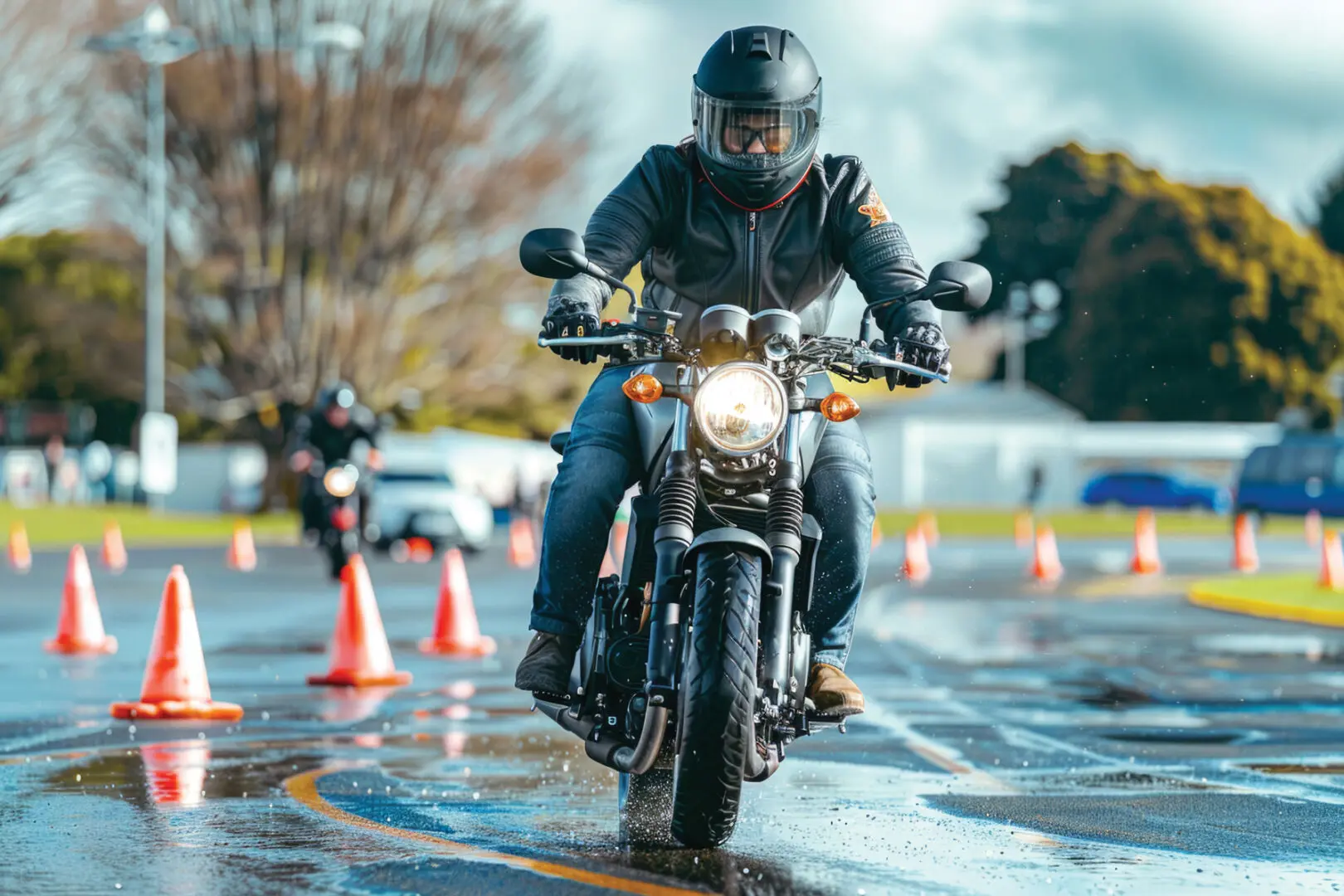Motorcycle Culture—Fun and Safety on Two Wheels
By Mr. Adam Twigg, Occupational Safety, 628th Air Base Wing
As we head into summer, Airmen, Sailors, Soldiers, and Marines around Joint Base Charleston, SC, are already eyeing their calendars in anticipation of the warmer weather to come so they can get back to enjoying motorcycle riding; other, more stalwart personnel have not stopped. Moreover, other personnel may be eager to participate in the upcoming riding season but are rather intimidated by the perceived labyrinth of requirements that seem to obstruct their path to riding. Air Force military members must meet certain requirements before riding a street motorcycle. These requirements are laid out in Department of the Air Force Instruction 91-207, The Traffic Safety Program. Your major command or installation may include additional requirements.
I was recently asked several questions regarding the requirements for both the state and the Air Force. Requirements at the state level vary depending on the state where you are stationed. For instance, if you were ever stationed in California, you would have been allowed to “lane-split” (ride between lanes of slowed or stopped traffic moving in the same direction), but many states’ laws prohibit this practice. I would advise you to look on your state’s Department of Motor Vehicles website to learn the specific requirements for your area. South Carolina state laws differ in a couple of ways from the standards put forth by the Air Force and Department of Defense (DoD). For example, South Carolina law dictates that you must wear a helmet and eye protection only if you are under the age of twenty-one. The Air Force and DoD, however, require helmets, eye protection, sturdy over-the-ankle foot protection, and protective clothing, such as a long-sleeved shirt or jacket, long pants, and full-fingered gloves for all riders, regardless of age. These Air Force and DoD requirements supersede state requirements and must be adhered to by active duty or reserve riders whether they ride on or off base. Another example is that South Carolina does not require motorcycle safety training to operate a motorcycle unless riders have failed the riding portion of their license test three times; the Air Force and DoD require two types of training. This training requirement applies to active duty and reserve riders, but not to civilians riding on base unless their job requires them to operate a motorcycle.
The Air Force is committed to reducing the risks inherent to riding a motorcycle. Therefore, in addition to the legal requirements of having a valid motorcycle license, endorsement, or learner’s permit, military members operating a motorcycle with an engine size of fifty cubic centimeters or greater are required to attend specific training and briefings. To assist riders with understanding and meeting these requirements, I would propose that any personnel interested in operating a motorcycle first check in with the Motorcycle Safety Representative (MSR) for their squadron. The MSR will prompt them to create an account in the Air Force Safety Automated System so they can be tracked in the Motorcycle Unit Safety Tracking Tool (MUSTT) module. MUSTT is used to document the rider’s training and briefing requirements, as well as specific rider information, such as whether they are licensed and what kind of motorcycle they operate. Two kinds of briefings are required for the rider. The first is the initial motorcycle safety briefing, which must be completed within thirty days of a new rider checking into the command or within thirty days of becoming a new rider. I suggest that this briefing be completed with the Squadron Commander, MSR, and the rider so that all parties are aware of the service member’s riding status and what the expectations are to foster a partnership and a commitment to safe riding. The second briefing requirement is the annual/preseason briefing. This briefing highlights expectations, trends, policy changes, local riding conditions, and risk management.
The training requirement is a multifaceted process. Prospective riders must first obtain a motorcycle permit or already have a motorcycle endorsement on their license to enroll in any Air Force-sponsored training. The first training requirement is the Level I, or Basic Rider Course (BRC). The Air Force credits Level I training to those personnel with a motorcycle endorsement on their license; however, I strongly encourage them to take a BRC, if for nothing more than a refresher. The second training requirement is the Level II, or Basic Rider Course 2 (BRC2)/Advanced Rider Course (ARC). Riders should take the ARC if they intend to ride a sport bike. Level II training should be provided within sixty days of the request for training but no more than a year after completion of Level I training. Level III training, or sustainment training, is required every five years thereafter. Sustainment training is any training that meets or exceeds the requirements for Level II training. Prospective riders should work with their MSR to enroll in training. As stated earlier, these briefings and training requirements are required for all active duty and reserve riders, whether they are riding on or off base. By taking these measures to reduce risk, we can all plan to have a safe summer.


